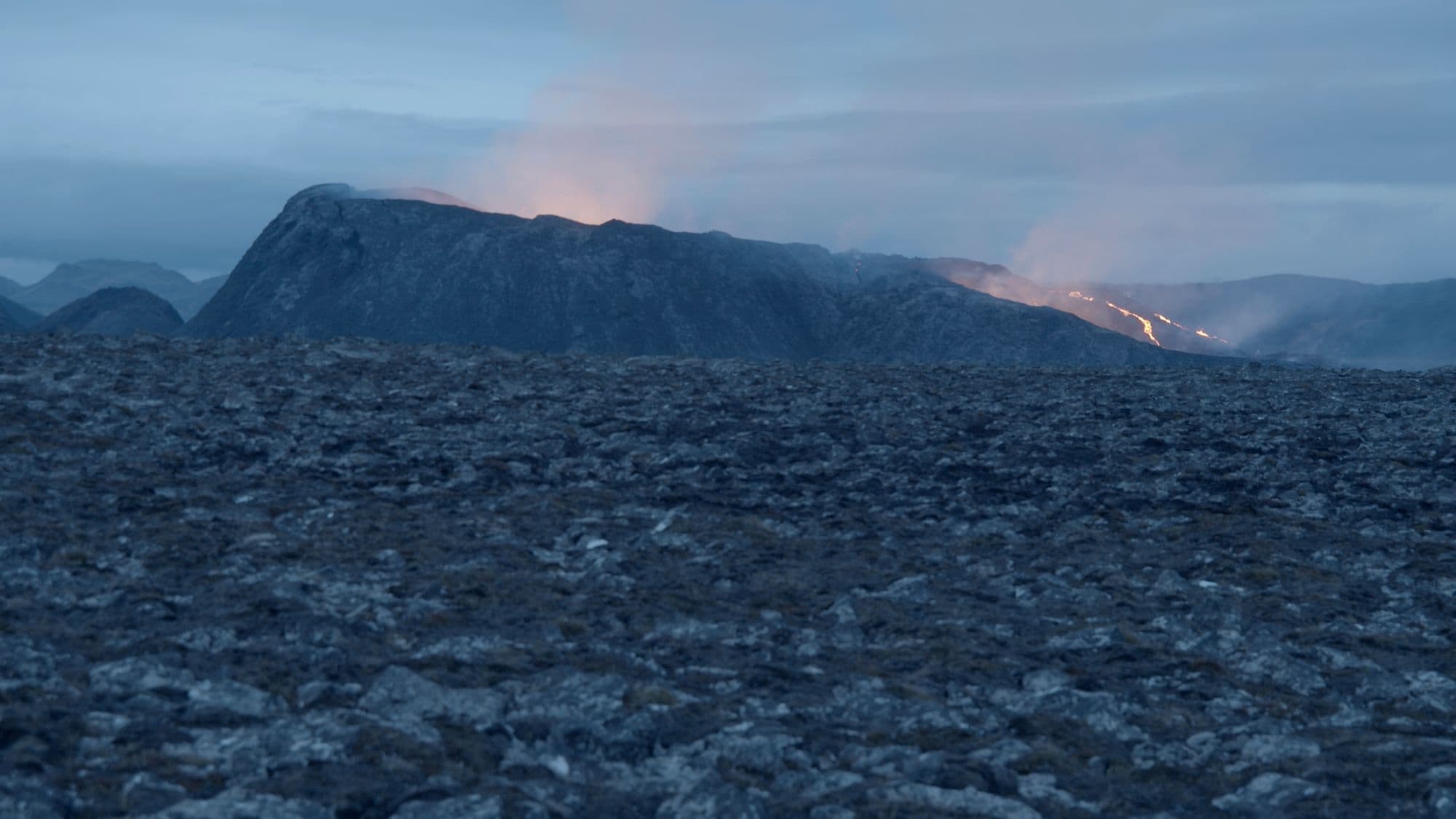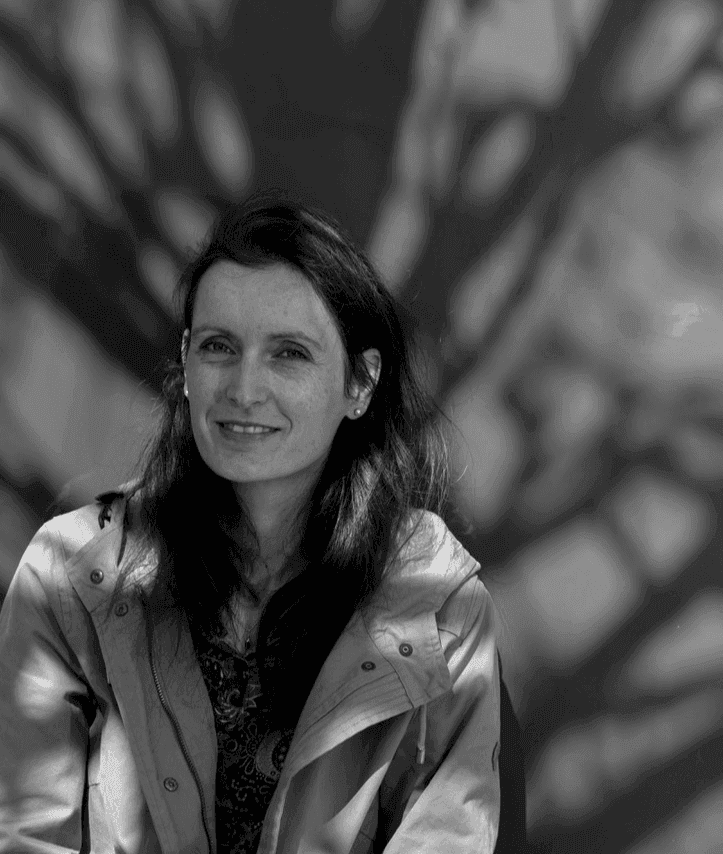
When trying to record an erupting volcano…
As Iceland is the most sparsely populated country of Europe, humanly uninhabited spaces are vast and usually are marked by a lack of anthropogenic noises, facilitating spaces of human silence. The lack of anthropogenic noises makes the country an interesting place for quiet listening and sound recording. This contribution refers to fieldwork experiences of such nature «silence» in 2021 and the unexpected avian and human encounters you can make when trying to record the rumbling sounds of an erupting volcano after midnight.
In 2021 I spent four months in Iceland for a fieldwork trip to explore birdscapes – different landscapes or environments that are inhabited by birds. For this purpose I made a collection of birdscape recordings. For two months I lived in an artist (and researcher) residency house in Skagaströnd – a 500 people fisher village in Northern Iceland. During one of the monthly open houses of the residency studio I prepared several excerpts of Icelandic bird sound recordings for the visitors.
I expected an excerpt of a morning chorus at Mývatn lake, a famous breeding habitat for various ducks and waterfowl, to be the clear favourite by my audience. Because of its complexity and richness in sound this morning chorus comes the closest to the recordings of rainforests and other unaltered habitats popularised by scientists, artists and environmentalists such as David Monacchi and Bernie Krause.[i] With this preference for rich sounding biophonies in my mind and ears, I somehow expected visitors to prefer the Icelandic bird orchestra than the simple sounds of a soloist.
Astonishingly, several listeners reported the rock ptarmigan to be their listening highlight. One of the listeners liked this recording best because she said she could not only hear the bird flutter, sing and call, but also the volcano, the place where it lives.
Field research surprises

Shortly before the open house event we made a trip to the Fagradallsfjall Volcano eruption on Reykjanes peninsula. The volcanic eruption took place at a previously humanly uninhabited area which suddenly was populated by hundreds of visitors per day. We went there shortly before midnight in the hope of escaping the crowds because this time I took my field recording equipment to record the volcano’s activity.
I placed the recorder and an ambisonic microphone at the foot of the only small hill on a plain overlooking the valley with the moving lava flows and the volcanic caldera behind in order to take advantage of the hill’s wind protection. After starting the recording process I left the equipment alone and moved closer to the volcano. I did not expect this to be an interesting recording as it was taken quite far away from the volcanic activity and was still regularly disturbed by the dominant high-pitched sound of several drones circulating over the lava flow. Many Icelandic tourists like to explore the country by drones also if drones are only allowed by special permission in many tourist attractions that lie in national parks, nature parks, and bird breeding areas. As Fagradalsfjall volcano erupted suddenly and is located on private land, drones weren’t regulated.
Back at the residency, I nevertheless listened to the recording and made an unexpected discovery: On this barren plain there was a rock ptarmigan. In front of the rumbling volcano, and in-between annoying drone noises, there is suddenly the sound of wings, followed by the rock ptarmigan’s typical, slightly hoarse voice singing, and then fainter and more subtle calls reminiscent of little birdies begging. All this happened right next to the microphone, as if the affordance of the place attracted this rock ptarmigan – like me – to seek shelter from the unrelenting Icelandic wind. Wind, for those who aren’t field recordists, is one of the biggest challenges in making sound recordings.
Breaking the silence of the earth’s existence
As Icelandic anthropologist Gisli Pálsson writes, we take the earth for granted until it reminds us uncomfortably of its existence by erupting or – in the case of the Swiss Alps – by sliding rocks and avalanches.[ii] The deep rumbles of the volcano and the fizzing, hissing and bubbling of the lava flows reminds us of the earth’s existence by breaking the silence of its solidity. The ground affords support for a terrestrial biped. It is my «stand-on-able» and «walk-on-able» habitat [iii] which in the face of a tremoring volcano shows itself to be unstable, eruptive, fluid, and which suddenly makes itself heard.
When listening to the recording we can listen back with the rock ptarmigan to its suddenly altering habitat. However, while the eruptions stopped on 18 September 2021 after six months of activity, the area of volcanic activity has become uninhabitable for rock ptarmigans and other birds which like these places such as the golden plover. It will take years until the lava fields will be populated again by plants and animals.

Covid19 lockdowns in 2020 revealed that humans’ motional impact on earth creates a measurable seismic noise: Our industrially multiplied motion and locomotion sounds are so noisy that they are like constant mini earthquakes. Just imagine the traffic noise human mobility produces. With the lockdowns this activity dropped rapidly.[iv] Under the threat of anthropogenic noises, environmental anthropologists Anja Kanngieser and Nicholas Beuret suggest human silence to become a «commoning» practice, as anthropogenic silencing enables space for other forms of life to flourish.[v]
However, we could also think about a commoning with the more-than-human world in terms of both listening and sounding with others. If we attune our movements with others by paying attention and, thus, to care, we could find joint ways of inhabiting the world sonically.[vi] In this context, drones can be understood as a source of eco-sensorial conflict, enhancing our visual impressions and understandings of the world by coming close to a bird’s eye view, while simultaneously dominating parts of the sound space of otherwise silent places such as Fagradalsfjall, which was likely never inhabited by humans.
Zitation
Patricia Jäggi, When trying to record an erupting volcano… , in: das.bulletin, 27.11.2023, URL: https://ekws.ch/de/bulletin/post/when-trying-to-record-an-erupting-volcano.

